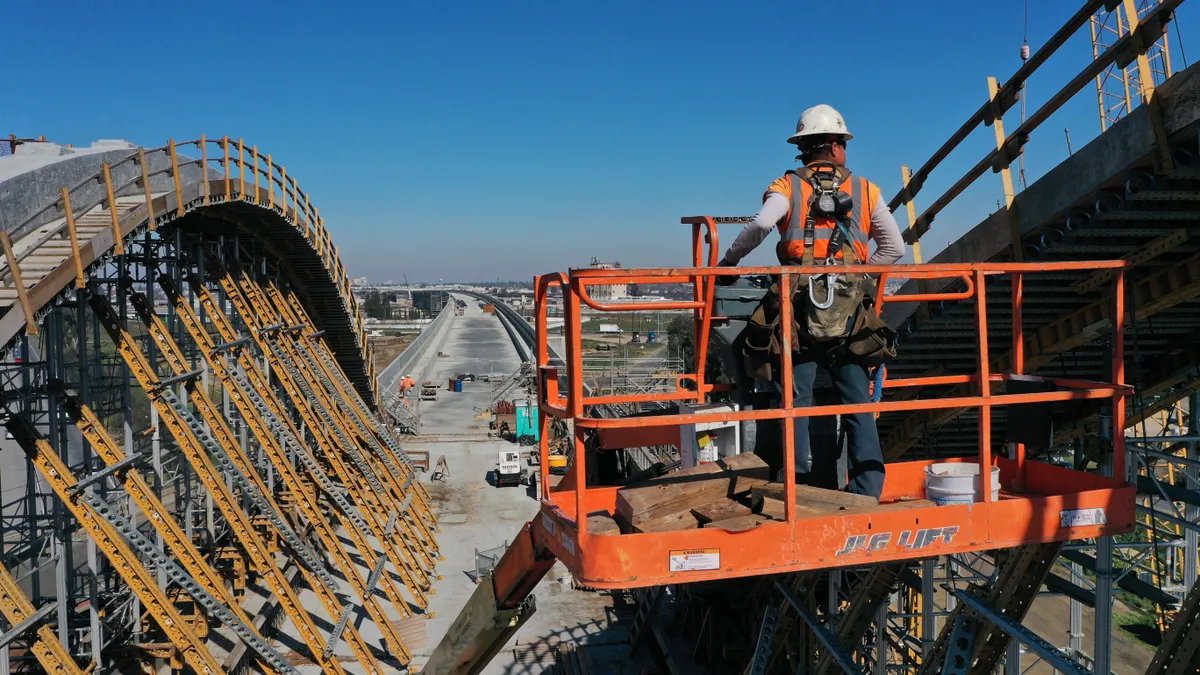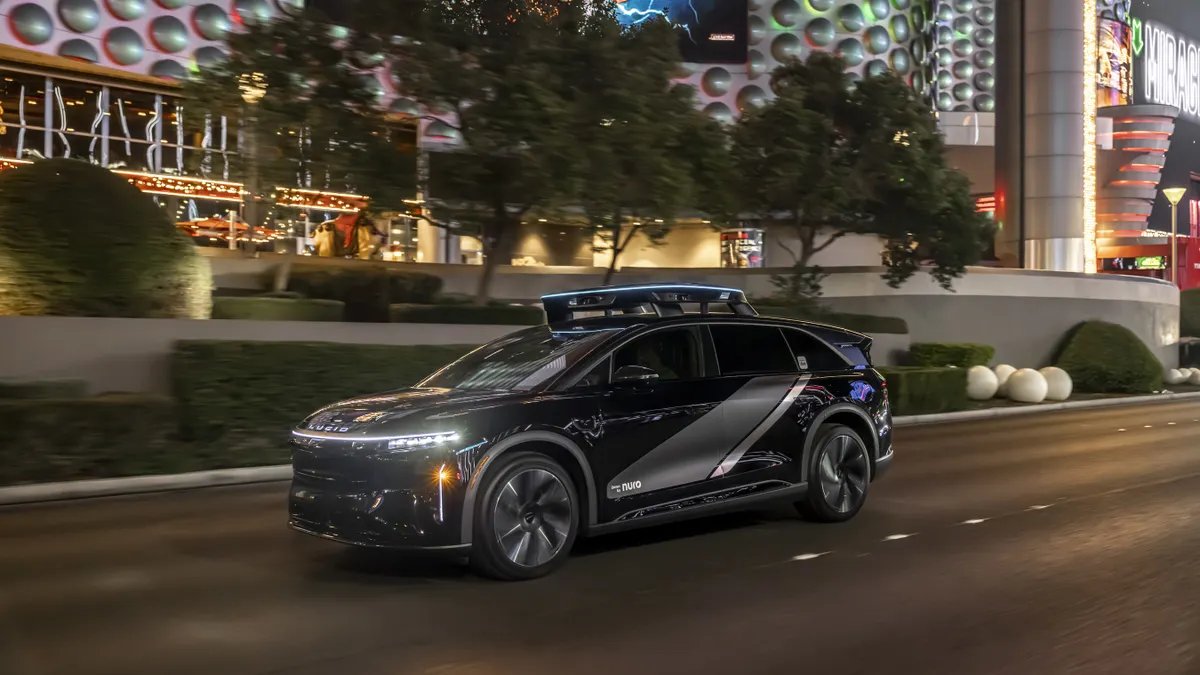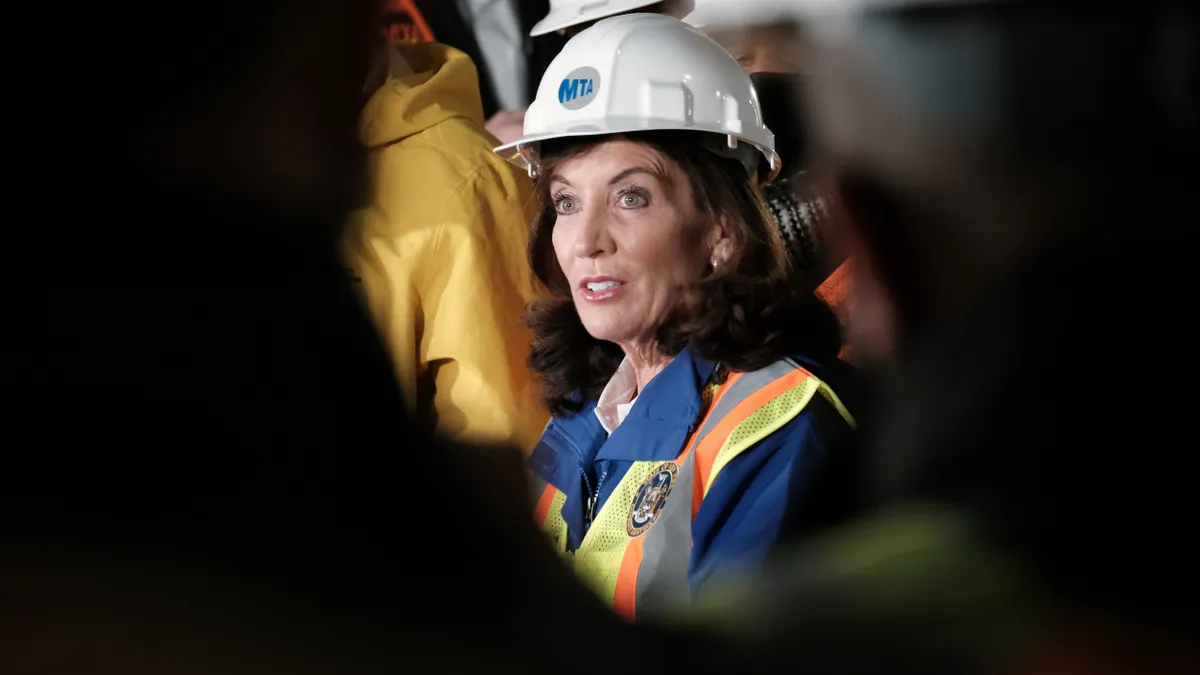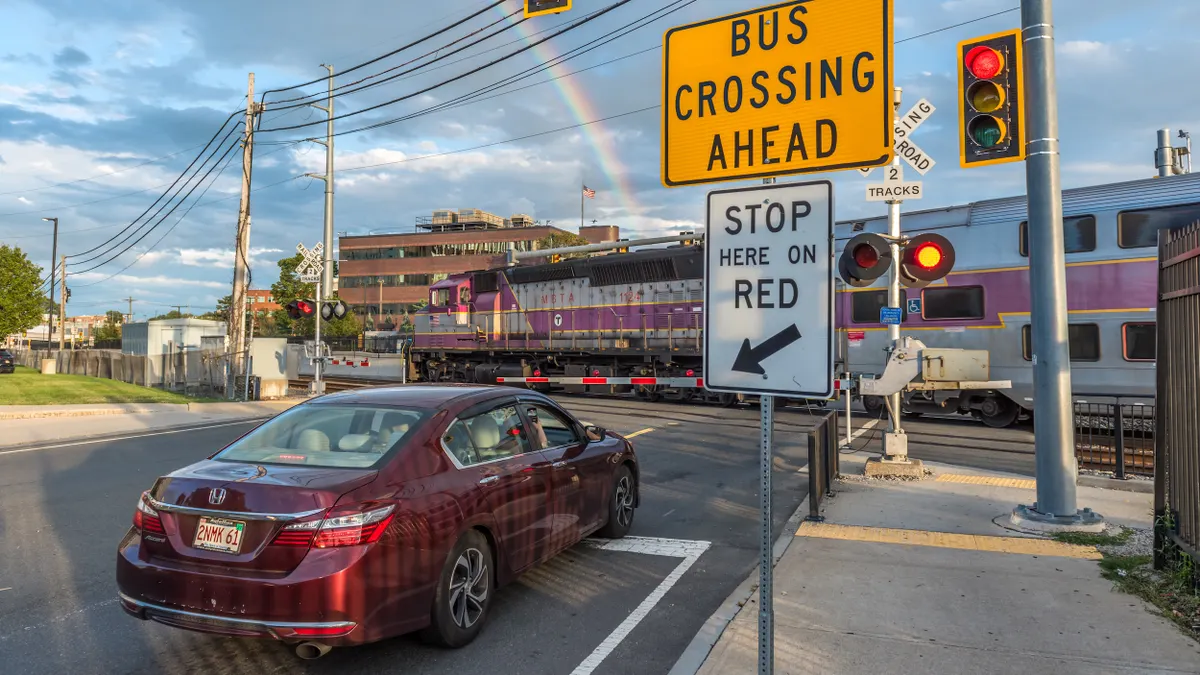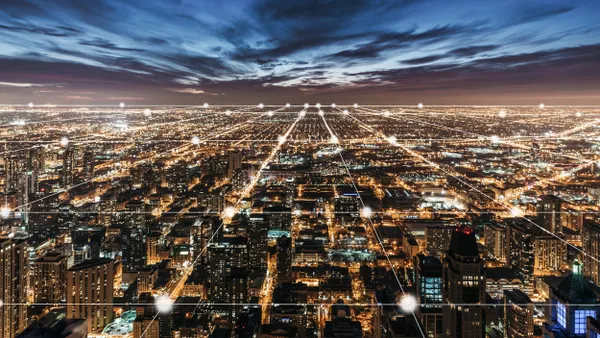With the news now official that Amazon’s second headquarters (HQ2) will be split between New York City and Arlington County, VA, transportation planners are already looking ahead to how the localities will cope with the expected influx of people and jobs.
Both localities will add 25,000 jobs apiece, with Nashville, TN also set to benefit from a new Operations Center of Excellence that will bring 5,000 jobs, but some have warned that already strained transportation systems in these regions may struggle to cope.
Despite some dire predictions, there was broad optimism among political leaders who believe Amazon will partner to ensure the regions’ existing infrastructure is not overwhelmed, while some have already started looking to the future.
Existing infrastructure a major selling-point
One of the cornerstones of the successful bids was an emphasis on public transportation, and officials are betting the investments they have already made will pay dividends and help their cities cope with more workers.
In Arlington’s bid, which it put forward in collaboration with the city of Alexandria, VA in a joint Northern Virginia effort, it notes New York City and the Washington, DC metropolitan area are both ranked as top cities that commute by means other than driving alone. According to their cited statistics from the American Community Survey, 49.8% of New Yorkers do not rely on driving, while that figure is 34.2% in DC.
And both localities talked up their existing transit facilities. During a press conference, New York Gov. Andrew Cuomo, D, said Amazon’s home in the Long Island City neighborhood will be close to all manner of transportation infrastructure that already exists or is already under construction. That includes projects to revamp LaGuardia and John F. Kennedy International Airports, a connection to the new Penn Station and a ferry service that will connect the area to Manhattan.
"In many ways, this location benefits from many other investments that are going on and many other initiatives that the city and the state are in the midst of," Cuomo said.
Meanwhile, the official website for National Landing — as Northern Virginia’s joint bid has been dubbed — talks up its "extensive interconnected network of mass transit, airports, commuter rail, roads, bike lanes and walking trails."
"Throughout this process, we have worked with our colleagues in Arlington County to highlight the collective strengths of our communities — our workforce, education system, infrastructure, and unparalleled quality of life — all of which will be strengthened by this new investment from Amazon, the Commonwealth and our localities," Alexandria Mayor Allison Silberberg said in a statement.
But both cities have faced criticism for the standard of their public transit offerings, as well as concerns they will not be able to cope with the influx of people. New York’s subway has suffered from a lack of funding for maintenance and now is set for an ambitious recovery plan, while in Washington, the Metrorail system has faced similar criticism.
Investments to be made
There are acknowledgements that this victory should spur further investment and effort to improve transportation offerings. Northern Virginia’s bid touted the Washington Metropolitan Area Transit Authority's (WMATA) $5.1 billion capital improvement plan and $6.8 billion project to bring rail service to Dulles International Airport. It had other promises too, including adding more trains during peak periods, bringing new opportunities for buses to skip congestion in dedicated lanes, and expanding the bus fleet.
"Going forward, NOVA will also invest in increasing and improving the existing public transportation infrastructure and develop programs to further incentivize and promote adoption of Bus-Rapid Transit and Metrorail systems," the bid document reads.
In a statement, DC Mayor Muriel Bowser said Amazon’s decision to locate close by is a "win for DC," but she called on further improvements to infrastructure and transit to help the region keep up with demand.
"We know that this opportunity will push us to work together on our biggest challenges like improving our transportation and infrastructure," Bowser said. "We must continue our investment in safety, reliability, and capacity at Metro and find ways to enhance service, including late night service."
DC Mayor Muriel Bowser says in a press conference regarding #HQ2 that while "most people are wowed" by WMATA, transportation infrastructure incentives from Amazon "should help" improve service. Bowser also wants to revisit keeping Metro open later.
— Kristin Musulin (@kristinmusulin) November 13, 2018
And Nashville may also struggle, given its reliance on personal vehicles. Voters in the city soundly rejected a $5.2 billion transit plan earlier this year, and at the time, Mayor David Briley warned on Twitter the city’s "transportation problems are not going away; in fact, we know they’re only going to get more challenging as we continue to grow."
The debate highlighted broad agreement on the need for action, and given the city’s continued growth, experts said they may need to explore other options.
"I'm interested to see how Nashville handles it, because Nashville has already been growing so much more rapidly than it was designed for, and the infrastructure is already struggling there," Julie Niederhoff, associate professor of supply chain management at Syracuse University’s Whutman School of Management, told Smart Cities Dive. "That center they're putting in in Nashville, infrastructure-wise, it's going to be interesting to see how that develops."
The transportation planning pipeline
As part of the incentives packages to Amazon, there are promises coming from the state and local level to up the ante when it comes to improving transportation, with more financial backing coming for long-discussed projects.
Virginia will invest up to $195 million in transportation projects to improve mobility in the region, including adding entrances to two Metro stations, improving the oft-clogged U.S. Route 1 corridor, expanding bus-rapid transit and adding a pedestrian bridge from the Crystal City neighborhood to Ronald Reagan Washington National Airport.
That is in keeping with long-term planning and study in the region, Arlington County Board Chair Katie Cristol said during a press conference. Arlington and Alexandria will invest a further $570 million in transportation projects, all of which had been approved as part of long-term capital improvement projects but could be accelerated under the right circumstances.
"Amazon’s presence in Arlington County will bring improved transportation systems, new parks, wider sidewalks, expansion of retail offerings, all things Arlingtonians have long prioritized in their vision for the future,” Cristol said.
It is a similar story in New York City, with the city and state already having committed to $2.4 billion of investment in infrastructure in the Long Island City neighborhood. Under the terms of the agreement with Amazon, a Long Island City Infrastructure Fund will be established to take 50% of the project’s payments in lieu of taxes (PILOT payments) and invest in infrastructure and other neighborhood priorities.
"The City and State are working closely together to make sure Amazon's expansion is planned smartly, and to ensure this fast-growing neighborhood has the transportation, schools and infrastructure it needs," New York City Mayor Bill de Blasio said in a statement.
“Amazon talked about the infrastructure and improving infrastructure,” Cuomo said during the press conference. “No state and no city is improving infrastructure as much as New York and New York City, or as quickly.”
But some believe the incentives to lure Amazon could have been better spent elsewhere. Rep.-elect Alexandria Ocasio-Cortez wrote on Twitter the concept of the tax breaks is "extremely concerning to residents here.”
Amazon is a billion-dollar company. The idea that it will receive hundreds of millions of dollars in tax breaks at a time when our subway is crumbling and our communities need MORE investment, not less, is extremely concerning to residents here.
— Alexandria Ocasio-Cortez (@Ocasio2018) November 13, 2018
And Niederhoff warned construction could cause major disruption in the jurisdictions and may not be completed in time for Amazon to move in. Hiring at its three new facilities will begin next year, although the company has not offered any other specific details on when construction and redevelopment projects might begin on the buildings it intends to occupy.
“These construction projects never go as quickly as the rest of us hope. There is definitely going to be a gap where they aren't going to have the city structures up to where, ideally, they would be,” Niederhoff said. She added that humans are “wonderfully adaptable” and will deal with any challenges when it comes to mitigating construction impacts from new infrastructure.
Future possibilities for Amazon, transit
Among the solutions that Amazon could consider for transit efficiency are staggered shifts for its workers or a shuttle bus service, like those run in Silicon Valley for large technology companies. That shuttle could connect to a parking facility or transit station, if it is not possible to locate them close to Amazon’s new offices.
Niederhoff said a shuttle service may be most useful in Nashville, which does not have much of a transit infrastructure and is still very car-reliant, while its operations center looks to be close to the downtown core. Meanwhile, Arlington and New York City are in more transit-heavy areas, so she said that there may be less of a concern about adding thousands of cars to already congested streets.
“As with everything else, the locals will find something to complain about, then eventually everyone will get used to it. And we'll find solutions."

Julie Niederhoff
Associate professor of supply chain management, Whitman School of Management, Syracuse University
“In the United States, we're very attached to our cars,” Niederhoff said. “But in New York City, a lot of people don't have cars and in DC, it's slightly more common to hop on the train system there and get around that way. If they can get it somehow linked up to those systems, and if not having a stop directly at the facility having a shuttle bus, that would certainly encourage more people.”
Some bold new ideas have also surfaced for transit. David Alpert, the founder of nonprofit advocacy group Greater Greater Washington, called for what he described as “Metro Express” to bolster transit around DC and make more use of commuter rail services that connect to Virginia and Maryland. Integrated commuter rail service would then enable better connections across the metropolitan region, Alpert argued.
"The payoff: the ability to run frequent trains from three rail lines in Maryland and two in Virginia to and through the Crystal City area, not to mention Alexandria, the L'Enfant Plaza and Union Station areas of DC, Silver Spring [MD], and more," he wrote. Alpert noted that such suggestions on Greater Greater Washington are to start a conversation, and are not necessarily always feasible.
Either way, Niederhoff said she is confident naysayers in the affected communities will come around, and that Amazon’s host cities will adapt and grow with their new tenants and the influx of jobs.
“As with everything else, the locals will find something to complain about, then eventually everyone will get used to it,” she said. “And we'll find solutions. People who are used to doing one thing, if it gets to be too inconvenient, they shift. That's one of the nice things with people: they are infinitely adaptable, and they will find the solution they are willing to tolerate.”







